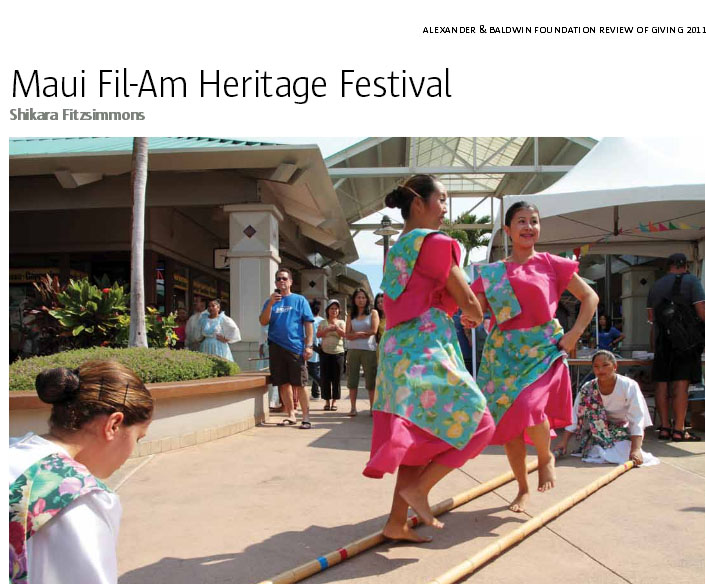Alexander & Baldwin, Inc. is a Honolulu-based company that was once part of the Big Five companies in territorial Hawaii. The company today operates businesses in real estate, sugar cane, and diversified agriculture. It is also the only “Big Five” company that still cultivates sugar cane. It remains one of the State of Hawaii’s largest private landowners, owning over 87,000 acres (35,000 ha) throughout the state. In addition, the company owns 47 income properties in the Hawaii and the continental United States.
Alexander & Baldwin has its headquarters in downtown Honolulu at the Alexander & Baldwin Building, which was built in 1929. The Alexander & Baldwin Sugar Museum exhibits some of sugarcane company’s history.
In 1831, Dwight Baldwin (1798–1886) and Charlotte Fowler Baldwin were sent by the American Board of Commissioners for Foreign Missions (ABCFM) as medical missionaries to the Sandwich Islands, as the Hawaiian Islands were called at the time. Reverend William Alexander and Mary McKinney Alexander arrived the following year in 1832.
Alexander & Baldwin was founded by their sons Samuel Thomas Alexander and Henry Perrine Baldwin (1842–1911) as Samuel T Alexander & Co., in 1870. The two purchased 561 acres (227 ha) of land on the island of Maui between Pāʻia and Makawao, on which they began to cultivate sugarcane.
The land the partners cultivated was semi-arid former dry forest, not ideal for growing sugarcane, a crop that required much water. Samuel Alexander realized that rain was plentiful miles away in the rainforests on the windward slopes of Haleakalā mountain. Thus, he designed a 17-mile (27 km) long irrigationaqueduct that diverted water from that part of Haleakalā to their plantation. Work started on the aqueduct in 1876 and was completed two years later in 1878.
After completion of the aqueduct, the company grew and was eventually renamed Alexander & Baldwin Plantation. Between 1872 and 1900, the company gradually took over more land and sugar mill operations. In 1898, Alexander and Baldwin purchased a controlling interest in one of its rival companies, Hawaiian Commercial & Sugar Company (HC&S) from Claus Spreckles. By 1899, the company had bought out Maui’s two main railroad lines (Kahului Railroad Company and Maui Railroad & Steamship Company). In 1900, the company incorporated and was renamed Alexander & Baldwin, Ltd.
In 1905, Alexander & Baldwin and other Big Five companies took control of the California and Hawaiian Sugar Company (C&H), giving Alexander & Baldwin a factory where they could refine its sugar.
The company sold its sugar interests on Kauaʻi and consolidated all of its Maui operations into an enlarged Hawaii Commercial & Sugar Company in the 1930s while continuing its pineapple operations as well as its sugar plantation in Kahuku until the 1960s.
Following World War II, the company entered a new business: land development and real estate. The company formed a new subsidiary, the Kahului Development Co., to develop housing in the Kahului area. In the following years, the company became more involved in the development of its land and the Kahului Development Co. became A&B Properties, Inc.
In 1962, the company purchased all outstanding interests in the Hawaii Commercial & Sugar Company and the sugar operation became wholly owned by Alexander & Baldwin. In 1964, the company also bought out the interests in Matson Navigation Company held by three of its fellow “Big Five” competitors: American Factors, C. Brewer & Co., and Castle & Cooke. In 1969, the company purchased all remaining, outstanding shares in Matson and the shipping company became a wholly owned subsidiary of Alexander & Baldwin.
In recent decades, the company’s development and real estate division has grown as A&B Properties developed new residential and commercial projects on other land the company owned. In addition, Alexander & Baldwin entered diversified agriculture, beginning to cultivate coffee and macadamia nuts in the 1980s. Alexander & Baldwin Nonprofit Service.
American Heart Association
The Alexander & Baldwin foundation has long supported the American Heart Association’s walks on Oahu and maui—in a big way. Hundreds of A&B, matson and Hc&S employees participated in the two 2011 Heart walks—along with babies, dogs, children and spouses—donating their ime as well as raising over $13,000 on both islands to support the AHA’s programs and services. Their motiva
tion? To better educate and equip their community to avoid heart disease. Along with enthusiasm, creativity abounds. for three years running, the maui Heart walkers have won the tee-shirt contest and bested their prior year fundraising total. On Oahu, A&B foundation Director vic Angoco served as the 2011 walk chair. “So many of our employees, their family members or friends have been affected by heart disease or stroke,” he said to explain why they were motivated to learn risk factors for cardiovascular diseases and stroke. “we encouraged lifestyle changes, and began weekly lunch break walks at Sand Island Park, near matson’s facilities, promoting walking as easy daily exercise.
core strengthening became sort of a ‘core value.’” As is actively helping your community—just part of the A&B way.
Maui fil-Am Heritage festival
Born and raised on maui, Shikara fitzsimmons is a serving of Hawaii’s cultural soup. Endowed with an Arabian first name, Irish sur-name and a diverse family heritage, she learned hula and Tahitian dance before following her little sister’s lead in taking up Tinikling—the national dance of the Philippines, their mother’s native land. fitzsimmons explained the dance was named after tikling birds, notoriously hungry, speedy and graceful in their pursuit of rice
grown on farms in the Philippines. The birds run, jump and fly to dodge bamboo traps and obstacles farmers set out. Tinikling dance requires teamwork and timing, with feet dancing and dodging pounding bamboo poles. when she performed at the inaugural maui fil-Am Heritage festival, an event supported by a grant from the A&B foundation, Shikara admitted she was “excited and nervous” but her instructor, ‘Auntie madie’ Pascua, felt she was ready. In fact, Auntie tests to make sure her students know the story and cultural context of the dances they rehearse weekly. Pascua said, “Shikara learned quickly,’ then paused and added with a laugh, “just like the birds!” “I’m part Hawaiian, and some other things too, but I feel connected to my filipino culture when I dance,” Shikara said. In case you wondered, her father says her name means “thankful.” The A&B foundation is thankful for all of the volunteers
who produced the festival, which raises money for educational scholarships. At the next maui fil-Am festival, in October, you can find all things filipino—historical displays, martial arts demonstrations, a fashion show and handicrafts, music, singing and dancing, cooking and balut-eating contests.

